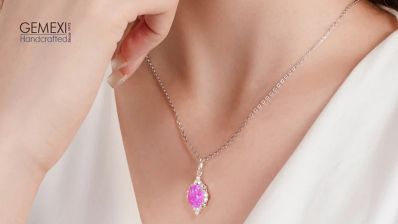The Changing Styles in Jewelry- Seen From The Eyes of Expert Appraiser
By Gemexi Team | Jewelry- Updated On Mar 25, 2020

Joyce Jonas is one of the appraisers at “Antiques Roadshow”, a show that allows American antiques owners to get their jewelry items appraised. As an expert in antique jewelry, she knows a lot about jewelry items. In a recent interview, she relooked at the defining moments that influenced jewelry styles in different eras. She highlighted on the role of Arts and Crafts, Art Nouveau, Edwardian jewelry and also of Queen Alexandra on jewelries.
From the time, Jonas bought her first jewelry piece – a gold ring from the money her grandfather had given her – to this date, jewelry pieces has always attracted her. When she was a teenager, she worked in her aunt’s jewelry store in New Jersey during the Christmas season and learnt quite a lot about the trade. Her rendezvous with jewelry became a serious affair when she and her friend decided to get into the business of personalized jewelry after she finished school. From there began a journey of learning a lot about jewelry-making but her interest in antique jewelry developed when she got a job at the Philips Auction Company. Since then there has been no looking back for Jonas and today she is a competent authority to answers various questions on antique jewelry.
While tracing the history of the different jewelry forms, Jonas revealed how the characteristics of Art Nouveau, Edwardian, Arts and Crafts, etc. differed from each other.If Arts and Crafts used simple materials such as copper, brass, silver (and not gold), the Art Nouveau explored more of outrageous designs. During the Arts and Crafts era, Jones said that easily available and not-very-expensive stones such as turquoise, tourmaline, and pearls were often used while symbolism and metamorphosis was a part of the Art Nouveau period. Edwardian jewelry, on the other hand, was designed for ladies who seeked all the attention. These ladies wouldn’t mind changing their dress and jewelry four to five times a day. All-in-all, the Edwardian period was more about formality. Referring to the age of the Art Deco, Jonas told that during this period emphasis was laid on stylizing pre-existing movements. From copying the Egyptian style to the Aztec designs, everything was attempted during the Art Deco period.
Jonas also mentioned that if history is carefully traced, it can be found that much of what went into jewelry design and style depended on the socio-economic situation of the period. For example, she mentioned during both the World Wars, the use of platinum was restricted as the metal was used for war effort. Naturally platinum wasn’t found in any jewelry piece of that period. On the other hand, diamonds became popular during the same time, especially because of the efforts of DeBeers.
During these movements, different types of jewelry have been used, said Jonas. For example, she mentioned that in the Arts and Crafts movement, pendants, belt buckles and shoulder clasps were very popular, whereas during the Art Nouveau movement, a typical piece could be anything. Several things were popular during that period. Dog collars, necklaces, enamel jewelry and hair combs were all largely used during the Art Nouveau movement. In the Edwardian era, Jonas observed, that everybody loved wearing tiaras. She observed that during this same period, there was also a magnificent popularity of diamond necklaces and corsage ornaments. At the turn-of-the century, Jonas observed that the Edwardian period ushered in an all-white look because of the popularity of the white tiara, white gown, white dog collar, white diamond necklace, white corsage ornament and the white pearl earrings.
Crediting on the influence of Queen Alexandra, the wife of Alexander of Russia, Jonas noted that she brought in a lot of feminine influence in jewelry making. Not only was the Queen a beautiful lady, but she also reveled in jewels. She was an extremely feminine woman, according to Jonas who could drape herself in long pearl necklaces, long diamond necklaces etc. During the turn of the century, her style and grace made everyone look up to her.
Having being an appraiser in the “Antiques Roadshow” for so many years, learning historical details about jewelry is almost a necessity for Jonas. She revealed during the interview that social class and background both had a role to play in how jewelry designs evolved over time. She mentioned how the Arts and Crafts Movement was started by a group of intellectuals who didn’t know the art of jewelry-making themselves. Since they could not do all the enameling, gold-work and stone setting, they became known as the enamellists. During the Art Nouveau era, Tiffany and Lalique were responsible in bringing a certain style to the period. In fact Lalique is credited for bringing plique-a-jour to France while Tiffany popularized stained glass windows-like jewelry styles.










0 Comments
Write Comments